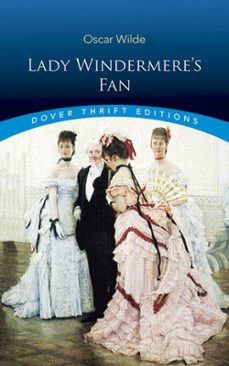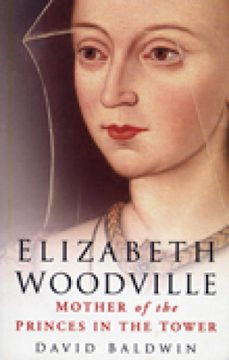Imprescindibles
Ficción
No Ficción
Ciencias y tecnología Biología Ciencias Ciencias naturales Divulgación científica Informática Ingeniería Matemáticas Medicina Salud y dietas Filología Biblioteconomía Estudios filológicos Estudios lingüísticos Estudios literarios Historia y crítica de la Literatura
Humanidades Autoayuda y espiritualidad Ciencias humanas Derecho Economía y Empresa Psicología y Pedagogía Filosofía Sociología Historia Arqueología Biografías Historia de España Historia Universal Historia por países
Infantil
Juvenil
#Jóvenes lectores Narrativa juvenil Clásicos adaptados Libros Wattpad Libros Booktok Libros de influencers Libros de Youtubers Libros Spicy Juveniles Libros LGTBIQ+ Temas sociales Libros ciencia ficción Libros de acción y aventura Cómic y manga juvenil Cómic juvenil Manga Shonen Manga Shojo Autores destacados Jennifer L. Armentrout Eloy Moreno Nerea Llanes Hannah Nicole Maehrer
Libros de fantasía Cozy Fantasy Dark academia Hadas y Fae Romantasy Royal Fantasy Urban Fantasy Vampiros y hombres lobo Otros Misterio y terror Cozy mistery Policiaca Spooky Terror Thriller y suspense Otros
Libros románticos y de amor Dark Romance Clean Romance Cowboy Romance Mafia y amor Romance dramatico Romcom libros Sport Romance Otros Clichés Enemies to Lovers Friends to Lovers Hermanastros Slow Burn Fake Dating Triángulo amoroso
Cómic y manga
Novela gráfica Novela gráfica americana Novela gráfica europea Novela gráfica de otros países Personajes, series y sagas Series y sagas Star Wars Superhéroes Cómics DC Cómics Marvel Cómics otros superhéroes Cómics Valiant
eBooks
Literatura Contemporánea Narrativa fantástica Novela de ciencia ficción Novela de terror Novela histórica Novela negra Novela romántica y erótica Juvenil Más de 13 años Más de 15 años Infantil eBooks infantiles
Humanidades Autoayuda y espiritualidad Ciencias humanas Economía y Empresa Psicología y Pedagogía Filosofía Historia Historia de España Historia Universal Arte Cine Música Historia del arte
Ciencia y tecnología Ciencias naturales Divulgación científica Medicina Salud y dietas Filología Estudios lingüísticos Estudios literarios Historia y crítica de la Literatura Estilo de vida Cocina Guías de viaje Ocio y deportes
DAVID BALDWIN
Recibe novedades de DAVID BALDWIN directamente en tu email
Filtros
Del 1 al 5 de 5
ROTOVISION 9780929837314
people listen. And, sometimes it can even change a persons life. The One Show celebrates all of the qualities that go into making a successful ad campaign or design. Considered by many to be the benchmark in advertising annuals, this years edition features the very best work from around the world from the 2007 One Show and One Show Design contests. In these pages are more than 1,600 four-color images from the finalists and winning entries, insider perspectives from the Gold Pencil winners, a spotlight on the Client of the Year, the college competition winners, and a look into the judging process with a Judges Choice section. Lavishly produced with full-color throughout, this book is the must-have annual for creatives, clients, students, and anyone interested in advertising and design. Categories covered include print, design, integrated branding, television, and radio. Known among creatives and designers in the advertising industry as THE book to have, with 29 years of legacy
Ver más
Tapa blanda
The History Press 9780752468976
Elizabeth Woodville is a historical character whose life no novelist would ever have dared invent. She has been portrayed as an enchantress, as an unprincipled advancer of her familys fortunes and a plucky but pitiful queen in Shakespeares histories. She has been alternatively championed and vilified by her contemporaries and five centuries of historians, dramatists and novelists, but what was she really like? In this revealing account of Elizabeths life David Baldwin sets out to tell the story of this complex and intriguing woman. Was she the malign influence many of her critics held her to be? Was she a sorceress who bewitched Edward IV? What was the fate of her two sons, the Princes in the Tower? What did she, of all people, think had become of them, and why did Richard III mount a campaign of vilification against her? David Baldwin traces Elizabeths career and her influence on the major events of her husband Edward IVs reign, and in doing so he brings to life the personal and domestic politics of Yorkist England and the elaborate ritual of court life.
Ver más
eBook
The History Press 9780752479903
Warwick the Kingmaker, the Earl of Warwick & Salisbury whose wealth and power was so great that he could effectively decide who would rule England during the Wars of the Roses (1455-1487), had six sisters: Joan, Cecily, Alice, Eleanor, Katherine and Margaret. They all married powerful noblemen who fought on opposing sides during this turbulent period.The Kingmakers Sisters examines the role that they played in late fifteenth-century England, as wives, mothers and homemakers, but also as deputies for their absent husbands, and how the struggle between the Yorkists and the Lancastrians affected them and their families. Scholarly but accessible, this is the first history of the Wars of the Roses to be written from this perspective, and will appeal to general readers, historians of the period and those with an interest in feminist history.
Ver más
eBook
The History Press 9780752479927
Did Richard, Duke of York, the younger of the Princes on the Tower, survive his imprisonment? In this revealing new book medieval historian David Baldwin presents an original and intriguing scenario. On 27 December 1550 an old man named Richard Plantagenet was buried at Eastwell in Kent. He had spent much of his life working as a bricklayer at St Johns Abbey, Colchester, but, unusually for a bricklayer, he could read Latin. Reluctant to give any account of his background, he eventually told his employer that he was a natural son of Richard III. Yet, if this was true, why was he not publicly acknowledged by the king? Richard III made provision for his other bastards, John of Gloucester and Katherine. The fact that he was called Richard Plantagenet is also revealing. Had he simply been Richard IIIs bastard, he would have been styled of Gloucester or given the name of his birthplace. And, most tellingly of all, where is the evidence that Prince Richard actually died? David Baldwin opens up an entirely new line of investigation and offers a startling solution to one of the most enduring mysteries in English history and a final exoneration for Richard III.
Ver más
eBook
Del 1 al 5 de 5



























